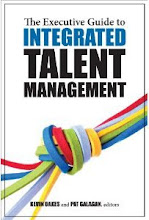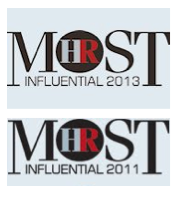 I’m quoted in an article called ‘The Appliance of Science’ in this month’s Human Resources magazine (UK version).
I’m quoted in an article called ‘The Appliance of Science’ in this month’s Human Resources magazine (UK version).
The article argues that whilst workforce planning has been around for years, it is now making a comeback as a scientific discipline. Referring to other inputs from Peter Howes and Mary Young, the article notes:
‘While more HR professionals are claiming to be doing some form of strategic workforce planning, it is the US that is still taking the lead, and Young and Howes believe it does not always follow that UK HRDs do it well, or that they even know how to do it properly. ‘There are three types of workforce planning: operational tactical, and strategic,’ says Howes. ‘While most organisations doing it are engaged in short-term operational workforce planning – headcount forecasting and staffing requisitions – relatively few are highly engaged in long-term strategic workforce planning, which includes actions such as business planning, needs assessment and scenario creation.’ He says only 50% of HR professionals he speaks to are able to ‘identify opportunities to use workforce analytics and most struggle to put them into action’. He adds: ‘Even if they have good metrics, organisations do not necessarily know what to do with them’.’
The article then asks whether things will improve? This is where I come in:
‘According to John Ingham, author of Strategic Human Capital Management, there is a real irony about the current economic situation. ‘Companies have been able to get away with not doing strategic workforce planning because the economy was predictable.’ he says. ‘But now, just as the need for doing it is more important than ever, the simplest things – such as knowing where the company needs to be in a year’s time – are suddenly very difficult to predict. I’m a great fan of the maths and the analytics but right now there is a need to do the bit before that, of visualising where the business will be. Companies have lost their chance of analysing the micro-elements; I believe they have to look first at the macro changes’.’
The article includes the 5-step workforce planning process I included in a previous post, which includes this ‘bit before that’. The article then goes on to ask whether my point means that workforce planning could be stifled, just when it is needed the most:
‘Howes and Young think not, and are keen for more HR professionals to start training in this area. As they both stress, the whole point is that workforce planning does not produce a one-size-fits-all answer; every organisation’s results are unique.’
I think not as well (regardless of what I might have said about companies losing their chances). But I do believe it’s the ‘bit before’ that’s most important now.
And this is art, not science.
Readers in the UK may be interested in the Human Capital Institute’s Strategic Workforce Planning workshop, being delivered in the UK on 27 & 28 April, and 29 & 30 June 2010. (And don’t forget that I deliver HCI’s Human Capital Strategist workshop in the UK too (and across Europe - but only to in-house teams) – this also includes a session on workforce planning).
- Consulting - Research - Speaking - Training - Writing
- Strategy - Talent - Engagement - Change and OD
- Contact me to create more value for your business
- jon [dot] ingham [at] strategic [dash] hcm [dot] com
.





























Jon,
ReplyDeleteAgree that unpredictability and complexity in global economy is and will make it difficult on our profession. Your comments are spot on and speak to the challenge ahead...but I see the immense opportunity for us...
Thanks for the thoughts.
Cheers,
Keith
Thanks for your comments Keith, and I love your blog. Hope to meet up on one of my trips to the US this year...
ReplyDelete